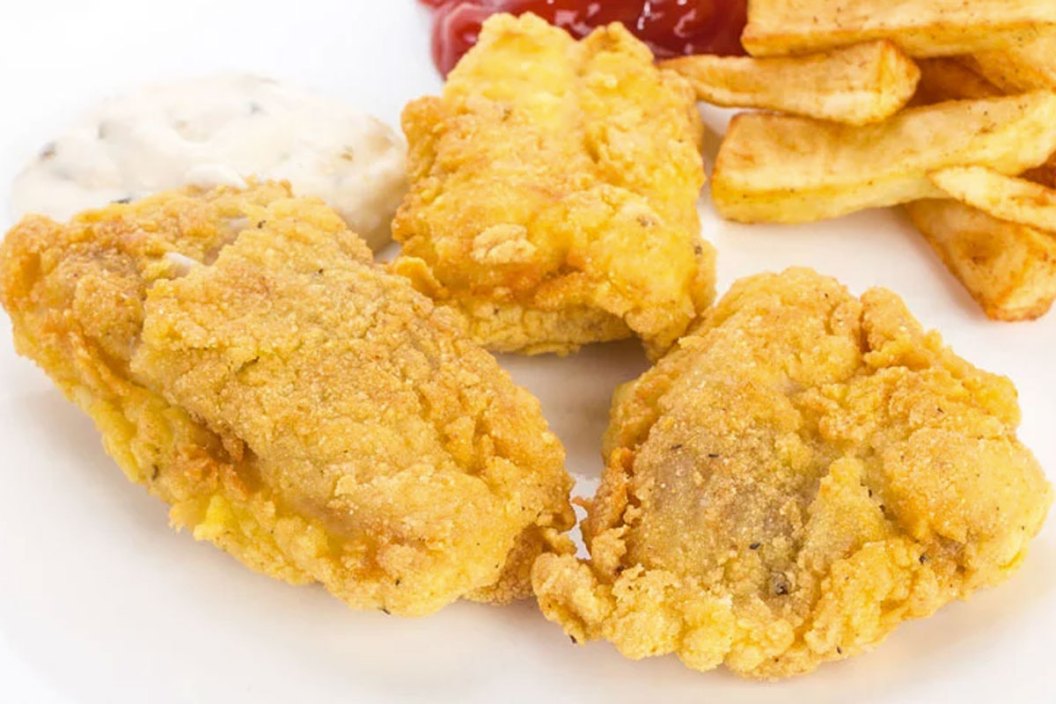Fried catfish joins a long, sad list of regional southern dishes that are often done wrong, such as barbecue, grits, and fried chicken. It doesn't need to be this way with fried fish. Frying catfish right is a pretty simple procedure, as long as you take these few suggestions to heart. Like anything, a fried catfish dinner recipe is a methodical process. Once you find your rhythm, take note of each step you took, the time you spent on it, and make it a concrete routine. There are few things that taste worse than poorly cooked fish. And, if you're like us, the last thing you'd ever want is to waste something you were lucky enough to get yourself.
Keep in mind there are a number of ways to cook catfish, but frying it is undoubtedly the most popular choice. The carbohydrates and cholesterol may take a toll on your body, but it seems wrong to eat catfish that doesn't have that crispy blend of cajun and buttermilk. If you did want to expand your catfish cooking methods, you could try grilling or blackening with a pan-fried approach, and there's nothing to say you couldn't throw some cuts on a baking sheet and throw them in the oven. But few catfish enthusiasts will ever stray away from the classic fried nuggets.
That said, let's jump into a timeless southern fried catfish recipe.
Step 1: Before You Fry
The work you do during the prep time prior to frying will be decisive. For frying catfish fillets, your biggest concerns will be the size of the fillet, and careful preparation of the breading.
Frying the whole fillet is a bad idea. Everyone knows that a larger fish fillet takes more time to cook, and time is always a liability when frying. Your fillet should be cut into small chunks or strips, and washed thoroughly before applying the breading. Whichever you decide, make sure the fillet is cut into thinner pieces.
The breading should be a mixture of cornmeal and a leavening agent, which could be all-purpose flour, baking soda or yeast. The leavened mix will make the breading crispier once it comes out of the fryer. For the best crust, you should apply two coats of breading.
You'll need an egg wash for this, but that's pretty easy to make—it's just a mix of egg yolk and milk that adds flavor and holds the breading together. After washing your fish, apply a thin coat of breading, kosher salt, and ground black pepper. If you're feeling adventurous, don't be afraid to spice things up by adding creole or cajun seasoning, cayenne pepper, paprika, lemon pepper, or Old Bay to your cornmeal mixture.
Shake off excess and then brush with egg wash until you have an even layer. Finish it off with another coat of breading. The layered approach helps the breading stick better, ensuring a thick, even crust with no cracks.
Step 2: The Fryer
Peanut oil is preferred, Crisco and lard are good alternatives for the peanut-allergic. Sources are split on whether to use a deep fryer or a dutch oven, but that's a matter of taste and what's on hand. You just want to make sure that you're deep frying, and that you're not using canola oil.
The ideal temperature for the hot oil is 350 degrees—not lower than that, and not too far over it. This is important, because the temperature of the oil influences how much gets absorbed. Soggy, oily catfish is usually a result of cooking at too low a temperature.
Frying anything is a delicate process, so make sure you're temperatures are set right, and also make sure you don't drop your fish in there prematurely.
Step 3: Resting and Serving
It's pretty easy to tell when a piece of catfish is done frying. It will float to the top when it's nearly done. However, make a note of the cook time, as having that routine to follow will always be a lifesaver. Once the crust is golden brown, remove it from the oil and set it on a paper towel. Then comes the critical final step: dabbing the excess oil. A lot of oil is absorbed while the fish is resting, and you need just the right amount to soak in. Too much gets you soggy, unpleasant fish, while too little leaves you without the flavor and mouthfeel that's the entire point of frying.
This takes a practiced touch, and you'll need to experiment a few times to find the right crispy balance. Side dishes that you can serve with your fried catfish are endless, but coleslaw and cornbread are two fan favorites. If you don't squeeze lemon juice on your catfish while it's still in the pot or cast iron skillet, you can always serve lemon wedges on the side for people to add themselves. Additionally, you can never go wrong with offering up a side of tarter sauce, a classic seafood dipping sauce.
Once you get in the hang of this fried fish recipe this without having to give it too much thought, it'll become an easy weeknight meal when time is limited. Just make sure you watch out for those carbs. Catfish is one of the most popular fish to cook at home for a number of reasons. Not only is it delicious when done correctly, but if you get into them and catch a bunch, you can fill your freezer up in a hurry.
So get out there, catch some catfish and start frying!




